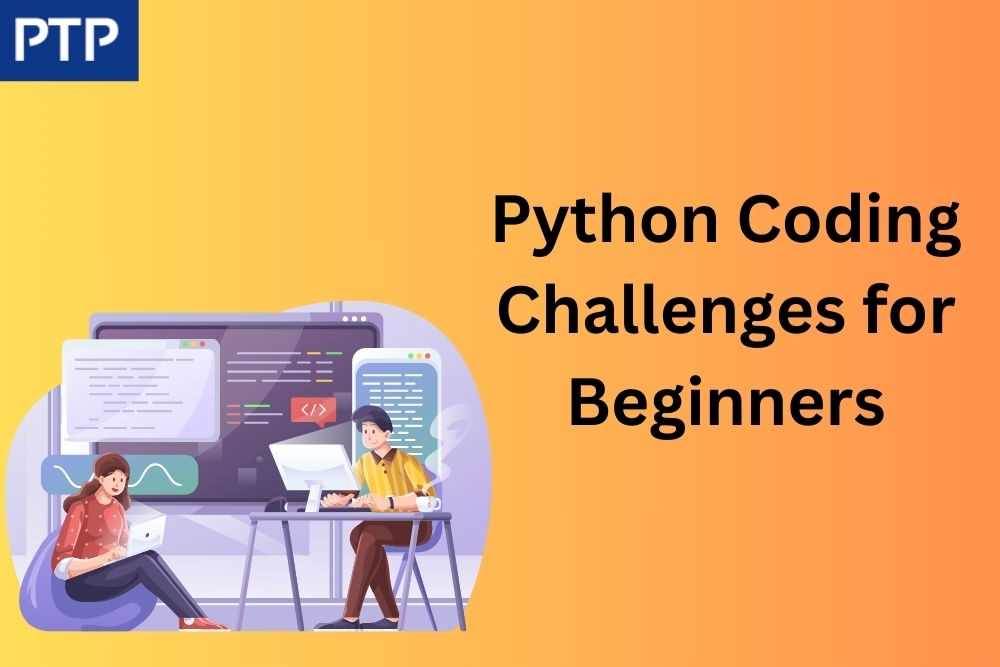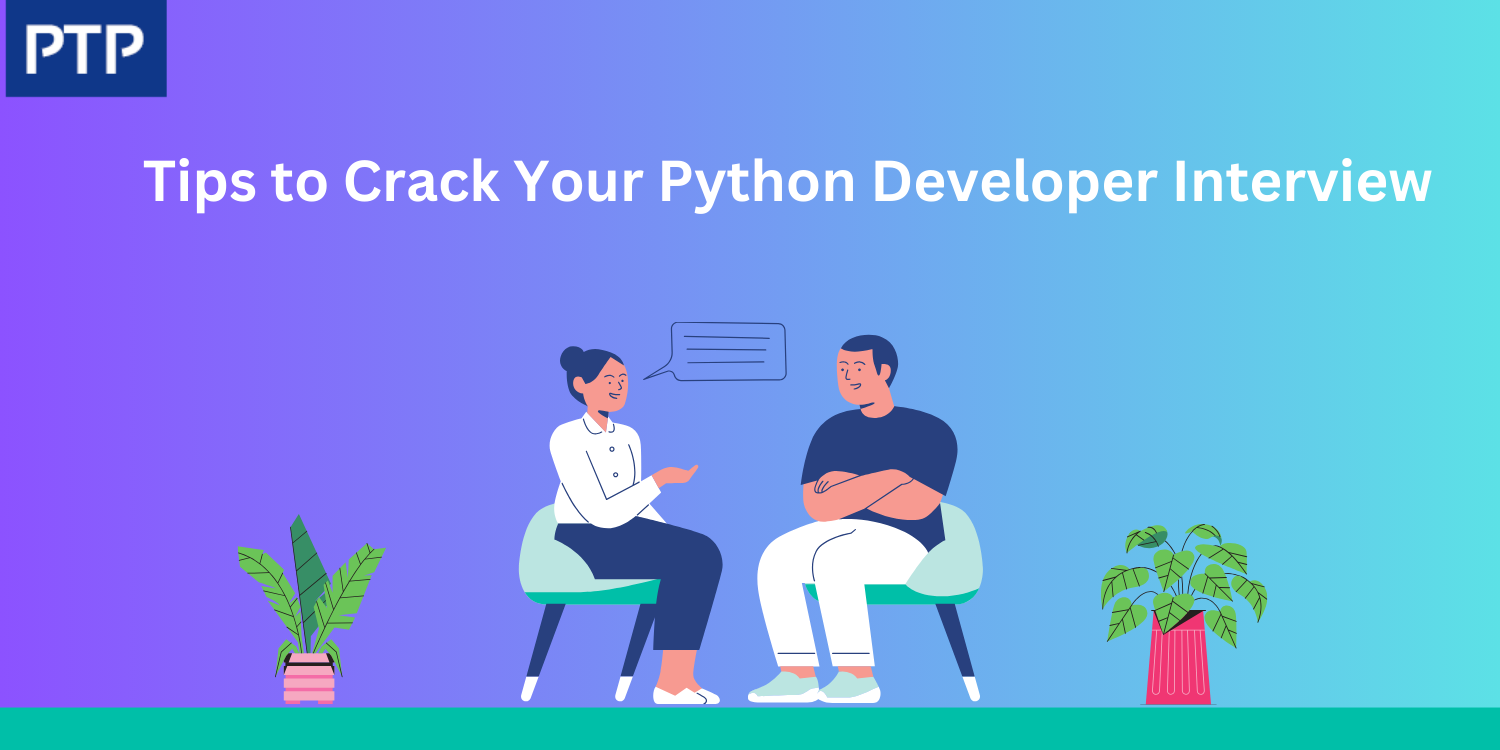For the past few days, I have been reading a lot of Quora questions where people are discussing and sharing their thoughts on Python. As a writer and a tech-gig, I thought I should also share my knowledge with my readers about Python.
So here I am. Let us begin with,
What is the Python language?
Python is a high-level programming language that was developed by Guido Ran Vosseum in 1991. It was researched and developed at Centrum Wiskunde & Informatica, located in the Netherlands. Python language was a successor to the ABC language that could handle exceptions and provide an interface to the existing Amoeba Operating System.
Also, Python derived its name from a popular BBC show Monty Python’s Flying Circus. While Vosseum was searching for a unique and mysterious name for his project, he read the script of this famous show. This was when this name struck him, and he later named this project “Python.”
Guido Vosseum was the lead developer of Python until 2018, after which he retired to enjoy his vacation.
Python 2.0 was released in October 2000. Cycle detecting garbage collectors was an added new feature in this release. It also now supported Unicode.
Python 3.0 was released in December 2008. It provides partial automation of porting code in Python 2.0 to Python 3.0. It is also a significant change made in the development of Python.
A group of developers who form the Python community is continuously working to bring about newer revisions and fix developers’ issues while programming.
Why Python?
According to a recent survey conducted by TIOBE in November 2020, it is the second most popular language among developers. Several reasons make Python popular among developers. Now let us discuss them.
- It is a high-level programming language. Python has an easy to follow rules of coding, making it easier for implementation. It uses indentation to define the block structures. This increases the readability score of all the programs. This enables the programmer to focus on the business logic rather than the syntax for the programming languages. This helps in designing better and improved solutions to a given logical problem.
- It is an object-oriented programming language. It supports features like inheritance, encapsulation, class & object relationship, and many other features of an object-oriented approach. It also supports the procedure-oriented approach to programming. Using this approach, the program is divided into small chunks to perform a certain task.
- The data types in Python need not be explicitly declared while creating a variable. Suppose we write the piece of code as z=6. It automatically creates an integer variable with the value ‘6’ assigned to it. Also, it automatically deallocates the variable’s memory, which is not used for a long time. This automatic memory management by the language saves time for the developer.
- Python developer needs to write a program. There is no need for any compilation of the code. Then the interpreter will generate the assembly language depending on the platform on which it is run. This feature makes it independent to work on Windows, Linux, Mac OS, etc. Thus, it can be easily ported to any machine without any code change. Just run the program on the new machine, the interpreter will generate the assembly language, showing you the final result, irrespective of the OS.
- Python is a storehouse for a large number of library functions and frameworks. This makes it compatible to build a large number of web and software-based applications. Python is called “batteries included language” because of this feature.
- We can take the use of the analytic features available with Python to analyze Big Data. Also, different library functions help us in the field of Data Science and Data Visualization. Python is also used to achieve various tasks in Artificial Intelligence and Natural Language Processing.
Where is Python used?
Python is used in several fields today.
- It is used to develop an embedded language for embedded systems.
- It is used with Selenium for automation testing.
- It is used to build a complex environment.
- It is used to design and develop GUI based applications.
- It is used as a scripting language in web development.
- It is extensively used in Artificial Intelligence and Machine Learning.
- It is also used for analyzing Big Data and visualizing the data for market studies.
- It is used to develop prototypes for different applications before building the more extensive scaled application.
Python Features
- It has a simple syntax that can be easily understood by non-programmers too.
- Python uses indentation to separate blocks or functions in Python.
- The length of Python code is shorter than other popular programming languages like Java, C++, and so on.
- It is easy to debug a code in Python as only one line is executed at a given time.
- It can be ported on any platform without any changes in the code.
- It is a free and open-source language available to developers for scripting.
- It is an object and a procedure-oriented language.
- It has a large community of developers providing regular fixes.
- Different languages like C/C++ can be used to compile Python code.
- It supports sizeable inbuilt library functions like NumPy, SciPy, and so on.
- It is easy to integrate Python code with Java, C, C++, and so on.
- Programs in other languages can be embedded in an existing Python code to provide certain functionality.
- It is not mandatory to specify the data type of the variable that is used.
- It automatically allocates the memory to a variable at the time when the program is run. It also automatically deallocates the memory when it is no longer in use.
Python Basics
Python is a free and open-source tool available for developers. It can be easily installed by visiting here. Select the version of Python according to the OS of your system, and begin downloading the file.
Here I have considered downloading Python for Windows for simplicity purposes. Once done, a .exe file to begin with installation will be available in your browser’s download folder.

Click on the set-up file to begin the installation process and follow the instructions.
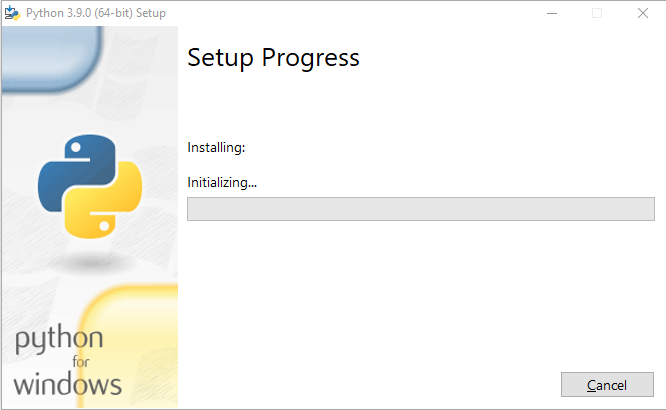
Once the set-up completes, you can open the User Interface by simply searching for Python in Start Menu.
It then opens a Python shell where Python commands can be run.
Let us now start with a simple command to print a line.

Here in Python, whenever we print a line, a newline character is added by default.
Now, if you have a set of instructions and variable that needs to be executed, then you may write them in a file with an extension “.py.” Then you may execute that file using the below instructions in Python shell.
To write the file instructions using IDLE, click on the File tab and click New File. Write all the instructions in that file and save it as a Python file with a .py extension.
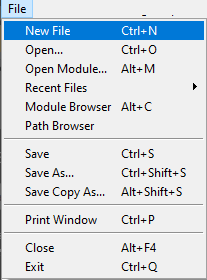
Now click on the Run tab, and click the Run Module.
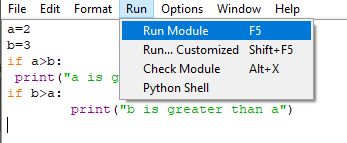
It will then display the result in the Python shell.

Companies that use Python
- Google Company uses it for crawling web pages. It is also used to develop and maintain Google App Engines to host web-based applications on Google cloud.
- Netflix, an online video streaming platform, uses Python for its operations and security. It also uses Python to give a recommendation of movies or shows to its user.
- The entire stack of DropBox is written in Python.
- Instagram uses Django-Python architecture for its complete development of the application.
- The Finacial startup Stripe uses APIs developed in Python to integrate it with their websites and mobile apps that accept payments on the website.
- Spotify uses Python to recommend songs to their user.
Artificial Intelligence with Python
From the time computer was invented, men were striving to make the computer intelligent to take actions like human beings. The branch of science that deals with designing and developing a human-like system are called Artificial Intelligence.

In AI, a study is made about the different ways in which humans think and learn new things. Also, the study is made about how humans behave in a given situation. This becomes the base of developing smart robots capable of performing like humans.
When I was learning about Artificial Intelligence, I used to wonder. Why should I use Python for Artificial Intelligence over other programming languages?
The most important feature of Python that makes it stand out is the availability of predefined library functions that help in the research and development of AI applications with Python. Also, Python programs are platform-independent; thus, it reduces the hassle of rework needed to run the code on multiple platforms.
AI and Machine Learning are the most demanding field of today. We can find exponential growth in this field for a few years.
Different social media platforms are used to generate a large amount of data every day. This data must be processed and analyzed to understand the need of customers and design necessary products and services accordingly. This analysis of data can be achieved using different techniques of AI.
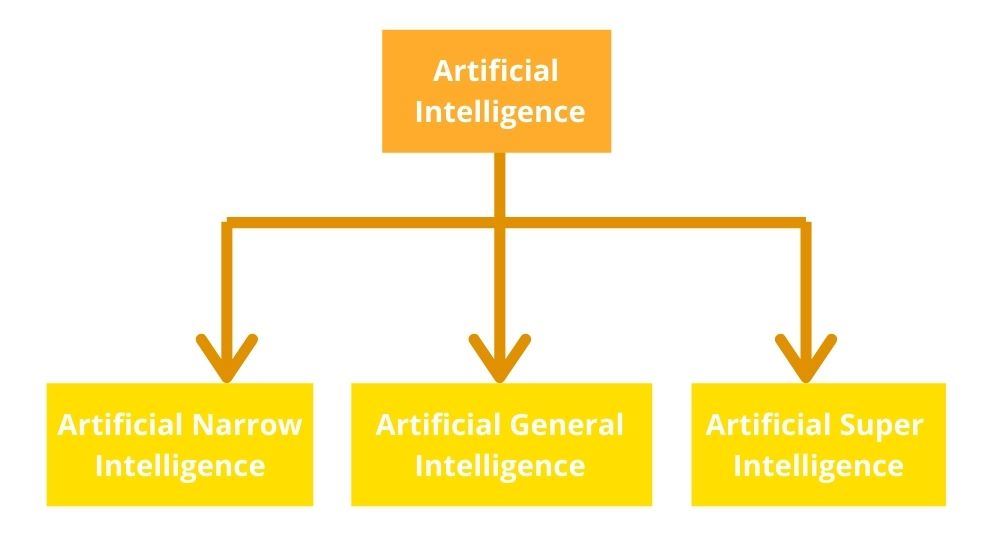
Artificial Narrow Intelligence
Artificial Narrow Intelligence is often referred to as Weak Artificial Intelligence as it deals with applying AI techniques only to specific tasks.
An example of Artificial Narrow Intelligence is Alexa of Amazon. It works with a pre-defined function and gives results on voice command. Even the Google search engine and self-driven Tesla cars are examples of weak Artificial Intelligence.
Artificial General Intelligence
Artificial General Intelligence is often referred to as Strong Artificial Intelligence as it performs an intellectual task just like a human could have done.
However, to date, machines can only compute solutions to complex problems but cannot think and behave like humans. So it is not a reality today, but it is the future of AI.
Artificial Super Intelligence
Artificial Super Intelligence is referring to computer systems that will be able to surpass the intelligence of humans.
It is just a theoretical concept, often seen in Hollywood fiction movies and fictional books. But it can become a reality as technology is advancing at a faster rate.
Let me first introduce you to the different library functions that make AI with Python possible.
- NumPy: Python uses this library functions to perform computations on scientific or mathematical data.
- SciPy: Python uses SciPy to perform advanced computations.
- Scikit-Learn: This library function is available to handle complex data.
- TensorFlow: It is a library function written in Python and developed by Google. It is used to write algorithms for Machine Learning. Additionally, it also helps in handling complex computations for any Neural network.
- Keras: This library functions the whole process of implementing Neural Networks. It is also used to visualize graphs, evaluate data sets, and so on.
- Theano: It is used to do elaborate computations involving multi-dimensional arrays.
- Natural Language Toolkit(NLTK): It is specially built for text mining, Natural Language processing, and analyzing the text.
Artificial Intelligence with Python opens several job opportunities for job seekers. It opens the door to a bright future. So learning Python is the first step towards achieving success in life. For this you can enroll for a course Artificial Intelligence with Python by visiting https://pythontraininginpune.com that offers online training courses for reasonable fees. Python for AI is the most trending course conducted by certified experts at Python Training In Pune bundled with practical experiences.
What is Python Used For?
Python is extensively used in various fields as it is a freely available open-source tool. Many readers often wonder what Python can do. So let us now discuss the various domains in which Python is used to develop different applications.
1. General Web Development
Every business is looking for an appealing website layout that can attract its customers. They want the website to be dynamic and responsive. They are looking for a good desktop and mobile versions of their website. This gives comfort to their customers, whether they login through their laptops or their mobiles.
It is necessary for them that they can build these websites with less effort and cost. Thus, Python is selected by many business owners for designing their websites.
The programs in Python are simple. They use simple keywords in English. They use indentation alone to separate the different blocks and functions in Python. This increases the readability of the programmer. Also, because of the simplicity of writing code in Python, it is easy to learn Python. These are the primary reasons that it is easy to create a prototype using Python.
Also, Python has built-in library functions whether you want to process an image or do complex calculations. Also, it has Django and Flask frameworks handling the back-end framework of websites.
It is easy and faster to ship the codes using Python. Thus, Python is an ideal language that is used by new entrants while developing their website.
2. Scientific Computing / Data Science
A python is a free tool that can be easily downloaded from their online website www.python.org. It is an open-source programming language that does not need any compilation. It is interpreted on the machine that you run, irrespective of the operating system. So it is as easy as writing a code, running it, testing it, and sharing your results.
These reasons make it popular among Data Scientists and Data Engineers to carry on their research work and undertake projects in Data Science using Python.
Commonly used library functions for Data Science
- NumPy is an abbreviation used for Numerical Python. It is used to handle complex computations that deal with multi-dimension arrays. It provides vectorization of different operations in Mathematics, speeding up the entire process.
- Pandas is a popular library function used for manipulating and analyzing structured data. It is mostly used for data wrangling.
Series is a one-dimensional data structure available in Pandas. While it has DataFrame to handle two-dimensional data.
- Python language uses Matpotlib, a specialized library function for Data Visualization. It is used to create linear graphs, piecharts, and histograms that will help understand data for non-technical persons.
3. Machine Learning
Machine Learning is a sub-branch of Artificial Intelligence. AI and Machine Learning are like best friends; they always work together.
A simple explanation for Machine Learning is, it uses algorithms to find the pattern of given data. Using these data and past experiences, these systems will respond like humans.
Machine Learning is a future technology that will show promising results. These systems will be used to automate and simplify the process for humans. This will help us solve several problems that need to be resolved on a large scale without human interference.
Different types of Machine Learning Algorithms
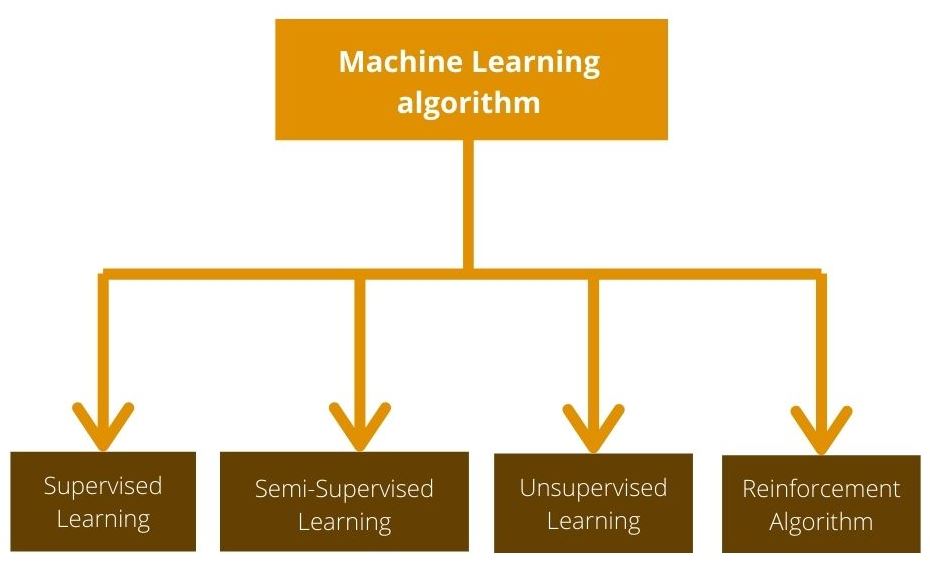
Supervised Learning
In this type of algorithms, computer machines learn from the different examples that are feed into the systems. It also learns from the target’s response, like labels, tags, and so on. It is like the kind of supervision a child receives from their teacher while learning a new topic.
Semi-supervised Learning
In this type of algorithm, an untrained signal is sent with some output targets missing.
Unsupervised Learning
In this type of algorithms, the computer machine learns from plain examples. They do not receive any response from target systems but determine their data patterns. They rearrange the data to provide useful information about data to humans. For example, the marketing automation that you see on an online platform.
Reinforcement Learning
This type of algorithm can be termed as a combination of a Supervised and Unsupervised algorithm. It does not contain labels like Unsupervised learning but takes feedbacks from the target system like Supervised learning. It is similar to how humans learn from the Trial and Error methodology. A famous example is when computer machines learn how to play different video games.
Scikit-Learn, library function for Machine Learning
- It is built over NumPy, Matpotlib, and SciPy library functions.
- It is an open-source tool and can be used commercially.
- It is a tool that can be used without much effort for Data Mining and Analysis of Data.
- It supports vector machines, gradient boosting, k-means, and so on.
- Everyone can access it.
- It can be used again in different conditions.
Machine Learning with Python is a popular and in-demand course among individuals looking for a significant career change. I would suggest you enroll Python Machine Learning training course at Python Training In Pune for excellent training and placement opportunities.
4. Deep Learning
Deep learning is a subset of Machine Learning that is already a subset of Artificial Intelligence. It is a type of ML algorithm that uses the previous layer’s output as the input for the next layer. This hep in the transformation and extraction of data. This implements Unsupervised Machine Learning Algorithms.
Deep Learning with Python is possible because of the extensive library functions like NumPy, SciPy, and many others. They help the engineers to undertake projects in Deep Learning in Python.
Join Python Deep Learning course at Python Training In Pune for guidance and practical implementations.
5. Startups
Python is a popular programming language that is used by any startup business and technology companies. It is the best choice when it comes to developing Minimal, Viable products.
Benefits of using Python for startups
- Python can easily be integrated with many other programming languages like Java, C, C#, C++, and so on.
- A prototype can be easily built using Python. Once it fulfills all requirements, it can be easily scaled to broader applications.
- Python has the support of several library functions that can help you develop AI, Machine Learning applications.
- Also, the availability of Django frameworks for developing websites is an added advantage to startups. This framework can handle massive traffic giving support to its expanding business.
6. FinTech and the Financial Industry
Python is an ideal choice when it comes to the Financial industry and Fintech. It can solve pricing problems, manage Trading, and manage a platform for Risk Management.
Python is the best answer to several issues faced by Financial industries like data, compliance, regulation, and analysis due to the presence of many built-in library functions.
This will help you achieve your set goals at a higher speed and give you fantastic results.
Python is the only scripting language available for free and can be used as front-end and back-end technologies. It also has a large support community continually working towards development and providing fixes to known issues.
JP Morgan’s Athena and Bank of America’s Quartz program is written in Python.
How do I learn Python?
Many individuals keep on asking me,” Is Python easy to learn.” I would say yes, it is easy to learn Python. But proper training is needed to understand the complete scope of Python.
Many online websites are available that provide free online tutorials in Python. Also, there are self-paced learning videos available. But these would not provide you with interactive discussions that happen with an instructor.
On a personal note, I would suggest you enroll in an online or classroom course in Python at Python Training In Pune. They are ISO certified company that offers a variety of software training courses located in Pune. They are the leading institute that offers a perfect blend of theoretical and practical concepts of Python.
The trainers are skilled certified Python experts working in top MNCs and have working experience of 5-10 years. They are personally selected by the Director of Python Training In Pune after several rounds of interviews. These teachers have a passion for teaching and hence are part of our training faculty.
It is necessary that you consistently practice as that will make you perfect in Python. So the trainers will be giving coding assignments daily during the class as well as home practice. This will help you understand the different scenarios that you may come across while working as a developer.
Though you will be provided with a soft copy of the training material, it is advised to take hand-written notes of the class for learning Python. Python Training In Pune provides you with quality training at an affordable fee.
The sessions, whether it is an online class or a session in class, will be interactive. So you are free to ask as many doubts that you might have. Our trainers will also ensure that they proceed to the next topic only when the discussed concept is clear for all. Also, peer interaction during the LIVE class will help you understand Python’s concepts from different perspectives.
We have several options for batches available to you. We have a Python class happening on weekdays and weekends. So you can choose a convenient batch according to your availability. Also, working professionals usually select weekend batches who want to upgrade their skills while still working.
In case you miss any class, you can attend the same topic with an upcoming batch. You can also learn the same topic through our recorded videos of the LIVE class if the last option doesn’t suit you.
You will get all the necessary instructions for software installation to help you with your practical understanding. Also, practically implementing every concept in Python IDE or Python shell is a must. Also, the instructors will encourage you to debug your code in case of any error as it helps in better understanding. They are always available to guide you and motivate you in your journey of learning Python.
Also, a lot of ebooks are available to you to enhance your knowledge. The course material is regularly updated to cover any updated release change in the next coming sessions. You can access our study material anytime from anywhere.
We pick up projects from reputed IT companies. Our students get a chance to work on these projects. Working on LIVE projects will give you insights into the project cycle. This will also help you in understanding how developers think about different possible solutions. The suggestions given by the instructors will help you in the successful completion of these projects. These projects will make you stand out from other students applying for the job.
You will also be awarded a Certificate of Completion once you complete the Online Python Course and all the assignments. This is a company recognized certificate.
You are also given 100% placement assistance. The dedicated team at Python Training In Pune will help you land your dream job. They will help you in drafting your resume. They will also conduct Personality Development workshops. These workshops will help you in enhancing your soft skills. They will also be conducting group discussion rounds, Mock interviews to prepare you for any job interview. The team will also share the most probable questions that are asked to candidates applying for the job.
We have tie-ups with 300+ MNC’s who are constantly on the hunt for skilled developers. They conduct interviews for our students, as they know they will get a job-ready candidate from the institute. We have already conducted 100+ corporate training. We already have 15000+ students placed across different companies working in India and across the world.
Different courses in Python
- Basic training in Python
- Advanced Programming in Python language
- Python Artificial Intelligence
- Python Machine Learning
- Python Deep Learning
- Python Data Science
- Python Automation testing
- Python Web development
You may select any course in Python depending on your interest. Python’s primary training is a compulsory course, to begin with, any other course in Python.
There are no entry criteria to join our course. You can be a fresher or a working professional looking to start a career or looking for a change.
You may call at 7410073340 to inquire more about the course. You can also book a demo session to understand the value and quality of this course.

